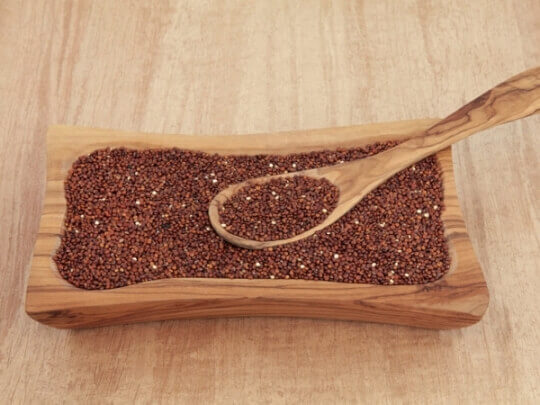Kaniwa, a seed with multiple properties
Kaniwa is a pseudocereal rich in fiber, vegetable proteins, calcium, iron and omega 3, from the same family as quinoa and also suitable for celiacs. Know their healthy properties and why include it in your diet.
What is kaniwa, properties and nutritional composition
The kaniwa makes its way, and with great force, among the list of new (albeit misnamed) super foods that are well worth discovering and introducing into our pantry. Specifically, it is a pseudocereal, that is, a rustic and millenary seed with grain properties, which has important health benefits.
The kaniwa, like the quinoa and amaranth, belong to the same botanical family (Amaranthaceae), hence its nutritional value is similar, although it is different species, so this seed is even able to overcome its other sisters thanks to its nutritional potential.
Although it may still be something unknown in Europe, the truth is that it is not a new food. On the contrary, since in South America it is a very common product and very well valued for a long time.
Origin of the kaniwa: where it is cultivated
To discover the origin of the kaniwa we must travel to the Andes, specifically to the highest areas of Peru and Bolivia, on the banks of the Titicaca River, with an altitude of between 3,800 and 4,100 meters above sea level. It is there where this pseudocereal grows and grows that it is characterized by a great resistance to adverse weather, which allows it to adapt easily to any other environment.
Great nutritional potential
The kañiwa belongs to the same botanical family as the quinoa; hence its nutritional value is very similar. However, the truth is that the benefits of the kaniwa are even superior, since it highlights some properties that the quinoa does not have. It is a very small food, but nutritionally it can be considered very big, since it has a high quality content of amino acids. In addition, it is rich in plant proteins, minerals such as calcium and iron, omega 3 fatty acids and a remarkable amount of B vitamins.
However, it would not be fair to talk about superfood: it is simply another product to consider in order increasing the variety and quality of the diet, but a single food alone does not help. The important thing is to combine it within a healthy lifestyle so that we can talk about health in an integral way.
Nutritional composition of the kaniwa
The nutritional composition of the kaniwa, presented in an integral way, shows the benefits of this pseudocereal for each 100 grams of product:
- 63% carbohydrates, which means something less than other similar grains.
- Between 16 and 19% of proteins, which gives a high biological value, better than other cereals.
- 10% fiber, higher than quinoa, and similar to whole wheat.
- 7.6% of fats, which supposes an amount superior to other cereals, although the most outstanding thing is that they are mainly unsaturated fats, that is to say, omega 6, 9 and 3 (listed from higher to lower content).
